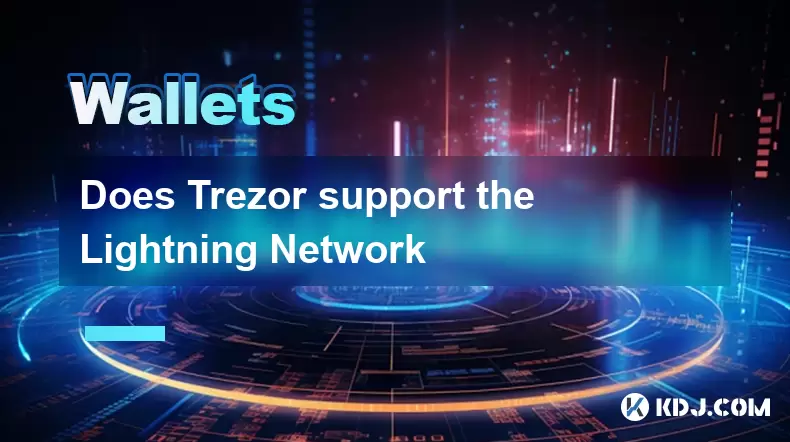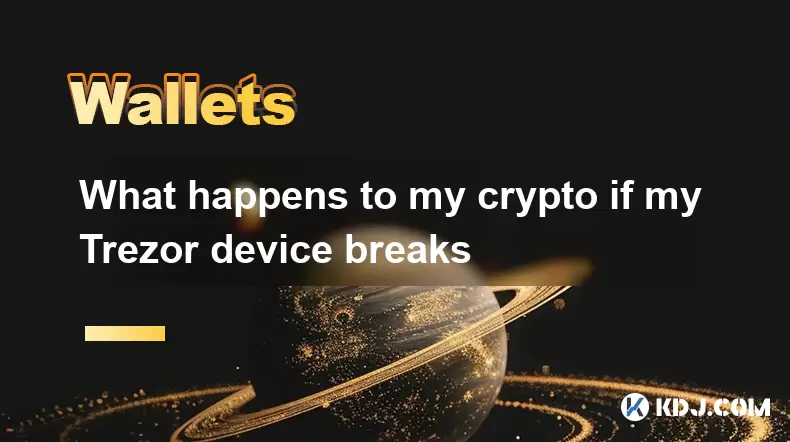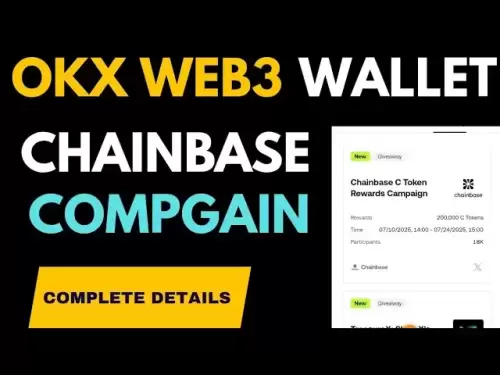-
 Bitcoin
Bitcoin $117,576.6195
-0.21% -
 Ethereum
Ethereum $2,938.5668
-1.35% -
 XRP
XRP $2.7699
4.60% -
 Tether USDt
Tether USDt $1.0003
0.01% -
 BNB
BNB $688.1624
-0.01% -
 Solana
Solana $160.5113
-1.95% -
 USDC
USDC $0.9999
0.01% -
 Dogecoin
Dogecoin $0.1976
-0.70% -
 TRON
TRON $0.3008
1.54% -
 Cardano
Cardano $0.7159
-2.16% -
 Hyperliquid
Hyperliquid $46.2240
2.04% -
 Stellar
Stellar $0.3966
22.03% -
 Sui
Sui $3.3928
-3.11% -
 Chainlink
Chainlink $15.1204
-2.43% -
 Bitcoin Cash
Bitcoin Cash $515.1741
-1.19% -
 Avalanche
Avalanche $20.8130
-0.90% -
 Hedera
Hedera $0.2001
-2.12% -
 UNUS SED LEO
UNUS SED LEO $9.0522
0.72% -
 Shiba Inu
Shiba Inu $0.0...01316
-2.01% -
 Toncoin
Toncoin $2.9843
0.61% -
 Litecoin
Litecoin $92.6745
-2.71% -
 Polkadot
Polkadot $3.9483
-0.06% -
 Monero
Monero $328.5347
1.10% -
 Dai
Dai $0.9998
0.01% -
 Ethena USDe
Ethena USDe $1.0006
-0.01% -
 Uniswap
Uniswap $8.3739
-6.50% -
 Bitget Token
Bitget Token $4.4241
-1.99% -
 Pepe
Pepe $0.0...01222
-3.96% -
 Aave
Aave $300.5203
-3.61% -
 Bittensor
Bittensor $382.2607
-1.92%
Does Trezor support the Lightning Network
Trezor currently doesn't natively support the Lightning Network, but users can integrate it with third-party wallets like Eclair or Casa for secure Lightning transactions.
Jul 11, 2025 at 08:42 am

Understanding the Lightning Network and Its Role in Bitcoin Transactions
The Lightning Network is a second-layer solution built on top of the Bitcoin blockchain. It enables fast, low-cost transactions by creating off-chain payment channels between users. This network has become increasingly popular for microtransactions and everyday payments due to its scalability and speed. Many wallet providers have integrated support for this technology to enhance user experience and transaction efficiency.
Trezor, as one of the leading hardware wallet manufacturers, offers secure storage solutions for cryptocurrencies. However, its integration with the Lightning Network has been a topic of interest among users seeking both security and convenience for frequent Bitcoin transactions.
Trezor's Current Support for the Lightning Network
As of now, Trezor does not natively support the Lightning Network within its official firmware or desktop interface (Trezor Suite). This means that users cannot directly open or manage payment channels, send or receive payments via the Lightning Network, or interact with Lightning-compatible services using only the Trezor device and its associated software.
However, there are workarounds developed by the community and third-party developers that allow advanced users to utilize their Trezor devices with Lightning Network wallets. These methods involve using external Lightning wallets while still leveraging the private key security offered by the Trezor hardware wallet.
Using Third-Party Wallets to Enable Lightning Network Functionality
Although Trezor doesn't offer native Lightning support, some third-party wallets can be used in conjunction with Trezor to enable Lightning transactions. These include:
- Eclair Mobile: A mobile wallet developed by ACINQ that supports the Lightning Network. It allows users to connect their Trezor through Electrum servers to derive keys and sign transactions.
- Casa App: Offers advanced self-custody solutions and includes Lightning support. Users can integrate their Trezor device into Casa’s multisig setup to enhance security while accessing Lightning capabilities.
- LND (Lightning Network Daemon): For technically skilled users, running an LND node and connecting it to a Trezor via command-line tools is possible. This requires setting up a full Bitcoin node and a Lightning node that can interact with Trezor's signing capabilities.
These options provide varying levels of usability and technical complexity, allowing users to choose based on their expertise and needs.
Steps to Connect Trezor with a Lightning Wallet
To use your Trezor with a Lightning Network wallet, follow these general steps:
- Install a compatible Lightning wallet like Eclair or BlueWallet on your mobile device or computer.
- Ensure you have a backup of your Trezor recovery phrase before proceeding with any new wallet integrations.
- Connect your Trezor device to your computer or phone via USB or bridge software.
- Select the option to import an external wallet or connect a hardware wallet within the Lightning wallet app.
- Derive the necessary keys using BIP44 paths that correspond to your Lightning wallet provider. Some wallets may require custom derivation paths.
- Sign transactions using your Trezor when prompted during Lightning channel openings or fund recoveries.
It's important to note that not all Lightning wallets will automatically recognize Trezor, so manual configuration might be necessary depending on the wallet used.
Security Considerations When Using Trezor with Lightning
While integrating Trezor with Lightning wallets enhances security compared to custodial or software-only solutions, certain risks remain:
- Funds stored in Lightning channels are not protected by Trezor until they are settled back to the main chain. If a counterparty becomes unresponsive, funds might be locked temporarily.
- Always verify transaction details on your Trezor screen before approving any signature to prevent phishing or malicious transaction attempts.
- Use trusted Lightning wallet providers and avoid experimental or unsupported software to minimize exposure to vulnerabilities.
- Maintain backups of both your Trezor seed and Lightning wallet data to ensure recovery in case of device loss or failure.
Users should also keep their firmware and wallet software updated to benefit from the latest security patches and compatibility improvements.
Frequently Asked Questions
Can I use my Trezor Model T with any Lightning wallet?
Yes, but only with wallets that support hardware wallet integration and allow manual derivation path configuration. Popular choices include Eclair and BlueWallet.
Is it safe to run a Lightning node with Trezor keys?
Running a Lightning node using Trezor-derived keys is generally safe if done correctly. Ensure that your node software is reputable and always double-check transaction details on your Trezor device before signing.
Does Trezor plan to add native Lightning Network support in the future?
There has been no official announcement regarding native Lightning Network support from Trezor. However, the company frequently updates its firmware and features, so future integration remains a possibility.
Can I lose funds if my Lightning wallet crashes while using Trezor?
If your Lightning wallet crashes, you won’t lose funds stored on-chain in your Trezor. However, funds locked in active Lightning channels may require time to recover through the Bitcoin blockchain once the channel is closed.
Disclaimer:info@kdj.com
The information provided is not trading advice. kdj.com does not assume any responsibility for any investments made based on the information provided in this article. Cryptocurrencies are highly volatile and it is highly recommended that you invest with caution after thorough research!
If you believe that the content used on this website infringes your copyright, please contact us immediately (info@kdj.com) and we will delete it promptly.
- Bitcoin Price's Golden Number: Analyst Predicts Massive Breakout!
- 2025-07-13 02:30:12
- XRP Price Breakout: Analysts Eyeing Explosive Moves
- 2025-07-13 02:50:12
- Grayscale, AI Crypto, and Top Assets: What's the Deal?
- 2025-07-13 02:55:11
- DOGE's $0.25 Ceiling: Will the Meme Coin Break Through?
- 2025-07-13 02:30:12
- Binance, Bloomberg, and a Lawsuit Threat: CZ's Fighting Back!
- 2025-07-13 01:30:12
- Litecoin, BONK, BlockDAG Presale: Navigating the Crypto Frenzy
- 2025-07-13 00:30:12
Related knowledge

What is a hardware wallet's secure element
Jul 11,2025 at 10:14pm
What is a Hardware Wallet's Secure Element?A hardware wallet is one of the most secure ways to store cryptocurrencies. Unlike software wallets, which ...

What is the difference between a custodial and non-custodial wallet
Jul 13,2025 at 03:21am
Understanding Wallet Types in CryptocurrencyIn the world of cryptocurrency, digital wallets play a crucial role in managing and securing assets. A wal...

How to add a new network to MetaMask
Jul 11,2025 at 11:42pm
Understanding the Need to Add a New NetworkWhen using MetaMask, a popular Ethereum-based cryptocurrency wallet, users often need to interact with diff...

How to add Ethereum L2 networks like Arbitrum to Trezor
Jul 11,2025 at 12:36am
What Is Ethereum L2 and Why Add It to Trezor?Ethereum Layer 2 (L2) networks, such as Arbitrum, are scaling solutions designed to reduce congestion on ...

What happens to my crypto if my Trezor device breaks
Jul 11,2025 at 01:49pm
Understanding Hardware Wallet FailureWhen you store cryptocurrency in a Trezor hardware wallet, the private keys are kept offline, offering a high lev...

How to find a specific receiving address on my Trezor
Jul 09,2025 at 10:36pm
Understanding the Purpose of a Receiving AddressA receiving address is a unique identifier used in blockchain networks to receive cryptocurrency. Each...

What is a hardware wallet's secure element
Jul 11,2025 at 10:14pm
What is a Hardware Wallet's Secure Element?A hardware wallet is one of the most secure ways to store cryptocurrencies. Unlike software wallets, which ...

What is the difference between a custodial and non-custodial wallet
Jul 13,2025 at 03:21am
Understanding Wallet Types in CryptocurrencyIn the world of cryptocurrency, digital wallets play a crucial role in managing and securing assets. A wal...

How to add a new network to MetaMask
Jul 11,2025 at 11:42pm
Understanding the Need to Add a New NetworkWhen using MetaMask, a popular Ethereum-based cryptocurrency wallet, users often need to interact with diff...

How to add Ethereum L2 networks like Arbitrum to Trezor
Jul 11,2025 at 12:36am
What Is Ethereum L2 and Why Add It to Trezor?Ethereum Layer 2 (L2) networks, such as Arbitrum, are scaling solutions designed to reduce congestion on ...

What happens to my crypto if my Trezor device breaks
Jul 11,2025 at 01:49pm
Understanding Hardware Wallet FailureWhen you store cryptocurrency in a Trezor hardware wallet, the private keys are kept offline, offering a high lev...

How to find a specific receiving address on my Trezor
Jul 09,2025 at 10:36pm
Understanding the Purpose of a Receiving AddressA receiving address is a unique identifier used in blockchain networks to receive cryptocurrency. Each...
See all articles

























































































